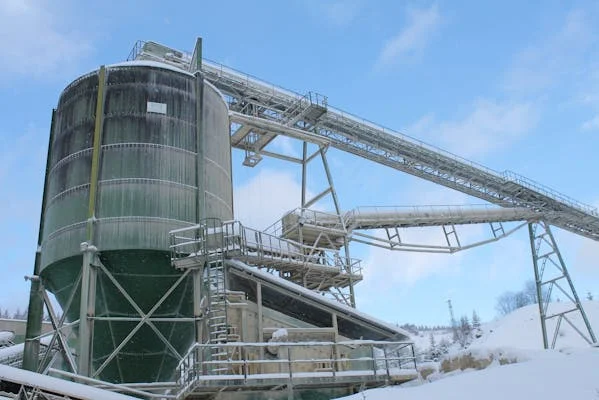The Energy Transition Revolution
Imagine a world where renewable energy sources like solar and wind power could supply energy consistently, regardless of time or weather conditions. This vision is no longer just a dream but a rapidly approaching reality, thanks to advancements in energy storage technology. At the center of this transformative movement is Infocast Energy Storage Finance, a platform that connects industry leaders, investors, and policymakers to accelerate the adoption of energy storage solutions.
In this article, we will explore the critical role of energy storage in the renewable energy transition, the unique value proposition of Infocast Energy Storage Finance, and the emerging trends shaping the industry. Whether you are an investor, a technology provider, or an energy enthusiast, understanding the financial mechanisms behind energy storage can provide valuable insights into this booming sector.
Why Energy Storage is Vital to Renewable Energy
The Renewable Energy Challenge
Renewable energy sources like solar and wind are intermittent by nature. Solar panels produce electricity only during daylight hours, and wind turbines depend on wind conditions. This intermittency poses a challenge for utilities and grid operators striving to maintain a stable energy supply.
The Role of Energy Storage
Energy storage systems (ESS) address this challenge by storing excess energy during periods of high generation and releasing it during times of high demand or low generation. These systems:
- Stabilize the grid by balancing supply and demand.
- Enable greater penetration of renewable energy into the grid.
- Reduce reliance on fossil fuel-based peaking power plants.
According to Bloomberg NEF, global investments in energy storage are expected to exceed $262 billion by 2030, highlighting the sector’s immense growth potential.
What is Infocast Energy Storage Finance?
A Premier Networking Platform
Infocast Energy Storage Finance is a specialized event series and platform that brings together key stakeholders in the energy storage industry, including project developers, financiers, policymakers, and technology providers. The goal is to facilitate dialogue, foster partnerships, and unlock financing opportunities for energy storage projects.
Key Features of Infocast Events:
- Expert Panels: Featuring insights from leading industry experts on market trends, technological advancements, and regulatory developments.
- Networking Opportunities: Connecting investors with project developers to accelerate deal flow.
- Workshops and Case Studies: Offering hands-on learning experiences and real-world examples of successful energy storage projects.
Financial Models in Energy Storage
Capital Investment Challenges
The upfront costs of energy storage systems can be prohibitive, requiring innovative financing solutions. Infocast Energy Storage Finance addresses these challenges by showcasing financial models that make energy storage projects economically viable.
Key Financing Mechanisms:
- Power Purchase Agreements (PPAs): Long-term contracts where utilities or corporate buyers agree to purchase stored energy at a predetermined rate.
- Tax Incentives: Federal and state-level incentives, such as the Investment Tax Credit (ITC), can significantly reduce project costs.
- Debt and Equity Financing: Attracting institutional investors through structured debt or equity investments.
- Energy-as-a-Service (EaaS): A subscription-based model where customers pay for energy storage services without owning the equipment.
Market Trends and Opportunities
The Growing Demand for Grid-Scale Storage
The global energy storage market is experiencing unprecedented growth, driven by declining battery costs, increased renewable energy adoption, and supportive policies. According to the International Energy Agency (IEA), grid-scale energy storage capacity is projected to increase by 20-fold by 2040.
Emerging Technologies
While lithium-ion batteries dominate the market, alternative technologies like flow batteries, solid-state batteries, and hydrogen storage are gaining traction. These innovations promise to:
- Extend storage durations.
- Reduce costs.
- Improve safety and environmental sustainability.
Policy Support
Governments worldwide are enacting policies to support energy storage adoption. For example:
- The U.S. Inflation Reduction Act (IRA) includes provisions to extend tax credits for standalone energy storage projects.
- The UK’s Smart Systems and Flexibility Plan aims to deploy 30 GW of energy storage by 2030.
Benefits of Attending Infocast Energy Storage Finance Events
For Investors:
- Gain insights into the financial performance and risks associated with energy storage projects.
- Discover investment opportunities in emerging markets and technologies.
For Developers:
- Learn about innovative financial models to secure funding for your projects.
- Network with potential partners and investors.
For Policymakers:
- Understand the regulatory frameworks needed to support energy storage adoption.
- Collaborate with industry leaders to shape future policies.
Success Stories from Infocast Events
Case Study: Large-Scale Battery Deployment in California
At a recent Infocast Energy Storage Finance event, a leading project developer secured funding for a 100 MW battery storage system in California. The project leveraged a combination of PPAs and federal tax credits, demonstrating the financial viability of large-scale storage solutions.
Case Study: International Collaboration
An Infocast event facilitated a partnership between a European technology provider and a U.S.-based utility. The collaboration led to the deployment of an advanced flow battery system, providing a sustainable and cost-effective solution for grid stabilization.
Challenges and Solutions in Energy Storage Financing
Common Challenges:
- High Initial Costs: Energy storage projects require substantial upfront investment.
- Regulatory Uncertainty: Inconsistent policies can deter investors.
- Market Risks: Unpredictable energy prices and demand patterns add complexity.
Solutions:
- Public-Private Partnerships (PPPs): Combining government support with private investment to share risks and rewards.
- Revenue Stacking: Diversifying revenue streams by participating in multiple markets, such as frequency regulation and demand response.
- Standardized Contracts: Simplifying agreements to attract institutional investors.
Conclusion: Are You Ready to Shape the Future of Energy?
Infocast Energy Storage Finance serves as a critical catalyst in the renewable energy transition, bridging the gap between technological innovation and financial feasibility. By attending Infocast events, stakeholders can gain the knowledge and connections needed to capitalize on the growing energy storage market.





